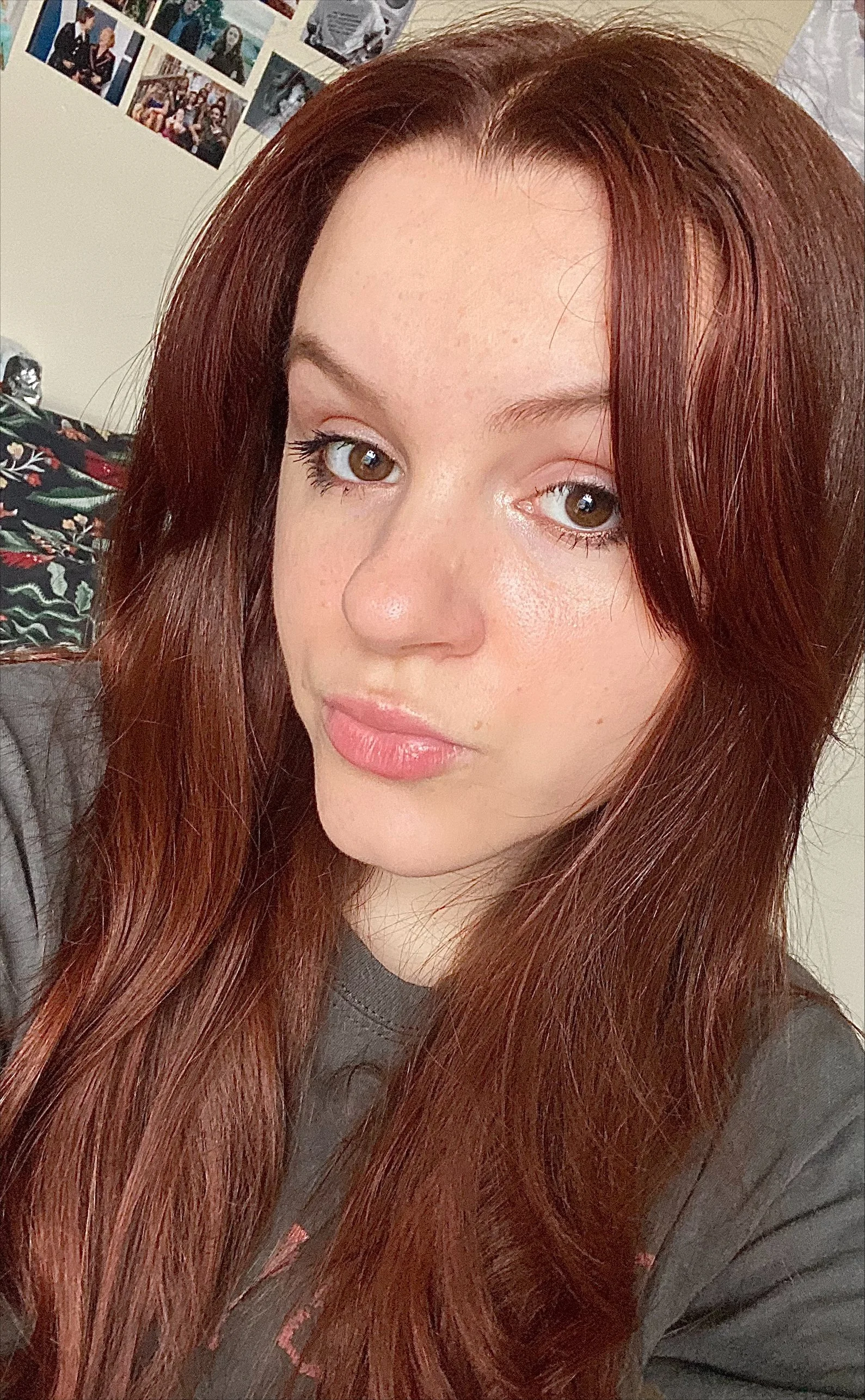"Can a thirteen-year-old boy really be an incel?" - Adolescence Forces Us To Ask, What Are Our Teens Consuming Online?
(SPOILER ALERT: This review contains spoilers.)
An exploration into why the hit Netflix show, “Adolescence”, has got the whole of the UK talking.
Legend of social realism, Stephen Graham, has once again blown us away with one of his gritty British dramas and, in doing so, got the whole nation talking.
“Adolescence” follows the story of a thirteen-year-old school boy, Jamie Miller, portrayed by Owen Cooper, after he is accused of stabbing and murdering Katie, another school girl in his year. Within the four episodes, we see the events carried out after the crime is committed, including his arrest and the effects it has on him, his family and other members of the community.
Never shy about tackling taboo subject matters, Stephen Graham, who stars alongside Cooper, is the driving force behind the series. He said he was inspired to create this show after seeing two news stories about minors killing minors. These stories inspired Graham to explore the rising epidemic of knife crime among adolescents. According to The Ben Kinsella Trust, a charity that aims to tackle knife crime, “over the past 10 years, the number of teenagers killed with a knife or sharp object has increased by 240%.” As Stephen Graham said in an interview, this was not created to be a “whodunit?” but rather he wanted to explore the bigger question of why. “Adolescence” attempts to explore this question asking, what would drive a 13-year-old boy to kill a fellow school girl?
The first episode starts with the early morning arrest of the young offender, Jamie Miller, when his family home is raided by armed police. The intensity is high, with Jamie crying and his parents, played by Stephen Graham and Christine Tremarco, screaming that their child would never commit a crime. It is immediately obvious we are dealing with a child; he is tucked up in bed next to his space themed wallpaper, and, with the fear of the invasion, wets himself. The stress levels don’t go anywhere after the arrest either - the one-shot take only builds emotions throughout all four episodes. Director, Phillip Barantini had previously done this style of filming in his hit mini-series, “Boiling Point”, also featuring Stephen Graham. Barantini said he was sceptical to film like this again as he did not want to put himself in a box, but was encouraged by Graham who thought it was needed for this type of story, as the one-shot take reinforced the suffocating anxiety-inducing experience the characters find themselves within.
Within episode two, DI Luke Bascombe and DS Misha Frank, played by Ashely Walters and Faye Marsay, visit the school that Jamie and the victim attended trying to piece together a motive for the crime. Struggling to understand modern day lingo and human interactions amongst young teens, DI Bascombe’s son, Adam, another student of the school, explains to his dad about the concept of being an ‘incel.’
We learn that the emojis commented by Katie on one of Jamie’s instagram pasts are used as code to make this insult. Before its use in modern day slang, it was originally coined in the 90’s by feminist activist, Alana (who kept her surname private) who wanted to create a safe space, through her website Alana's Involuntary Celibacy Project‘. This was a website created for those, who like herself were late bloomers sexually, helping people feel less alone and ashamed. Since then the term has been weaponised online by misogynistic men who have created a darker meaning for the word. Those who identify under the term admit to feeling rejected sexually by women and have banded together to now project hate onto them.
In 2014, proud incel, Elliot Rodgers, killed six people and then himself after just posting to YouTube a video venting his frustrations of being a 22-year-old virgin and his struggles with attracting women. After the crime, Rodgers was viewed as a hero amongst the incel community, who saw his actions as justified in their war against women.
However, in “Adolescence” Jamie is only thirteen. As one detective asks, “can a thirteen-year-old boy really be involuntary celibate?
Jamie is branded as an incel by the young girl who he goes on to murder, but claims he does not identify with the title or the ideology of the group. Within the third episode, Jamie opens up about his issues regarding his self-esteem to his criminal psychologist Briony, played by Erin Doherty, stating he thought he was ‘ugly.’ It becomes painstakingly clear how desperate Jamie is to be thought of as popular as towards the end of the episode he frantically cries out, hitting the windows, asking whether she likes him.
Within the intimate episode of Jamie and Briony, we start to better understand Jamie’s mindset, particularly his view regarding women. When asked whether his Dad has any friends that are women, Jamie becomes defensive, stating that his father is loyal to his mother, implying he believes that men and women cannot have platonic relationships. Through this, we could infer that Jamie only views women and young girls in a sexual nature.
After being pressed by questioning from Briony, Jamie admits to having watched pornography and casually claims it is just something everyone does. He also admits to following several models that he does not know on Instagram. Again, giving us an insight into Jamie’s sexual inner world. Jamie feels the pressure of having sexual relationships as he lies about engaging in several sexually intimate instances with girls, which he then later admits to be false.
Jamie, possibly unknowing to himself, in discussion with Briony, objectifies Katie, the girl he killed, referring to her as flat-chested, calling her a bitch and admitting that on the night of her death, due to him having a knife he “could have touched any part of her body.” Is the consumption of pornography directly responsible for men sexually objectifying women? If Jamie had not consumed pornography would Katie still be here? From this episode that question is not answered but does force us to consider.
Another possible factor in influencing Jamie’s misogyny is the rise in toxic masculinity amongst male content creators. Previously criticised in episode two, we hear a mention of the infamous online figure, Andrew Tate. The influencer is known for his sexist videos, promoting harmful views about how to treat women onto his mainly, young male fan base. Now facing charges of rape and human trafficking against women, several of Tate’s social media accounts have been banned due to his damaging ideology that was being consumed by his docile followers. This included a post from his X account which has now been taken down in which he stated women who had been sexually assaulted should “bear responsibility.”
It is not explicitly stated that Jamie is one of Tate’s viewers but in the final episode when Jamie’s parents, between themselves, try to pinpoint what went wrong with their child, they do discuss how he spent an unhealthy amount of time alone in his room on his computer. Through their discussion it is suggested that he was potentially consuming harmful content. Does following toxic masculine social media celebrities that do not properly respect women lead young boys to commit horrific crimes, like that in “Adolescence?” Can we hold Andrew Tate responsible for the killings of the children we see when we turn on the news?
The last episode focuses on Jamie’s family, showing the damaging effect that their child’s crime has had on them. We see this once loving home, with multiple family photographs covering the walls, now feel cold and emotionally barren. It is important to remember that Jamie’s home was loved and he had parents that cared and supported him. But their inability to resume with a normal life is shown when Eddie Miller, Jamie’s father, is unable to enjoy his birthday despite everyone’s best efforts due to his van being vandalised. The family have clearly been punished by members of their community for Jamie’s crime.
Towards the end of the episode, the family receive a phone call from Jamie who states he will be pleading guilty in his upcoming trial. The parents and sister struggle to hold it together as they realise that he will not be returning home, and reality sets in that their lives have been changed forever.
The final scene is very simple but extremely powerful. With the knowledge that his son will be pleading guilty, Eddie apprehensively enters Jamie’s bedroom. As he emotionally looks around, we see childish stickers on his door, space themed wallpaper covering his wall and a teddy on his bed, reminding us that despite everything he has done, Jamie is still a child. Again, the audience is forced to reckon with the question- how can a seemingly smart and loving 13-year-old boy commit such a horrific crime? Also seen in his room is his large computer, which almost dominates the space. Another question looms over the audience- how much influence did this computer have on the events that unravelled? The scene ends with Eddie breaking down in a flood of tears as he comes to terms with the reality of his boy never returning home to his bedroom.
What “Adolescence” does fantastically is simultaneously offer us explanations as to how a 13-year-old boy could kill, whilst also providing no neat clear-cut answer. Despite our desperation to understand why these devastating crimes are committed by such young people, it is not always clear. Jamie came from a loving, stable home, with happily married parents who supported him, yet he still took another girl’s life. We all want to know why children are taking the lives of their peers; what “Adolescence” does brilliantly is not just shine a light on this, but to force us to ask ourselves - are we doing enough for the adolescents in our own lives?
Written by Natasha Fieldsend
Natasha is an aspiring screenwriter and Film and Television graduate. She currently works at the theatre and in her free time when she is not writing, Natasha enjoys attending live gigs, walking her dogs and swimming.
Recipe



















